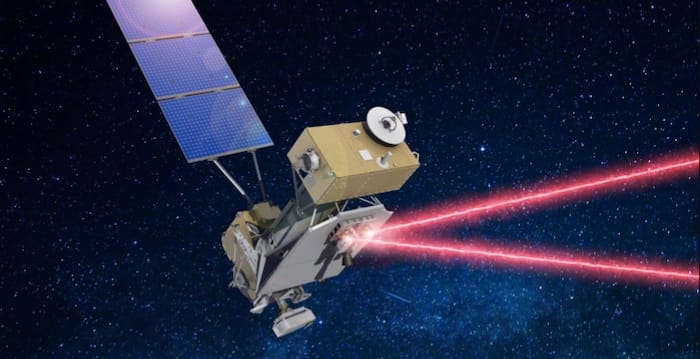Data Transfer in Space: Challenges and Innovations
Data transfer plays a critical role in space exploration missions, enabling communication, navigation, scientific research and overall mission success. However, the unique challenges of space, such as long distances, signal degradation, limited bandwidth

Introduction
Data transfer plays a critical role in space exploration missions, enabling communication, navigation, scientific research and overall mission success. However, the unique challenges of space, such as long distances, signal degradation, limited bandwidth and the need for reliable and secure communication, necessitate innovative solutions. This article delves into the technical aspects of data transfer in space, exploring the challenges faced and the cutting-edge innovations developed to overcome them.
Challenges in Space Data Transfer
Long Distances and Signal Propagation
Space missions often involve sending spacecraft to distant planets, moons, or even beyond our solar system. The vast distances introduce significant delays in data transmission due to the finite speed of light. For example, it takes an average of 20 minutes for a signal to travel from Earth to Mars, depending on their relative positions. This delay poses challenges for real-time communication and requires careful planning in data transfer. Additionally, as data travels through space, it encounters various obstacles that degrade the signal quality. Electromagnetic interference from celestial bodies, interstellar dust and cosmic radiation can introduce noise and distortions. These factors can significantly impact the integrity and reliability of the data being transferred.
Limited Bandwidth and Data Compression
The available bandwidth for data transfer in space is limited due to technological constraints and the need to share resources among multiple missions. This limitation poses challenges in transmitting large volumes of data efficiently. Prioritisation, compression techniques and intelligent data management become essential to make the most of the available bandwidth. Data compression algorithms, such as the Consultative Committee for Space Data Systems (CCSDS) standards, are widely used to reduce the size of data packets without significant loss of information. These algorithms help optimise the use of limited bandwidth resources.
Reliability and Error Correction
In space missions, data reliability is crucial to ensure accurate and error-free communication. The harsh space environment, including extreme temperatures, radiation and micrometeoroids, can pose risks to data integrity. To mitigate these risks, error correction codes are employed in space data transfer. These codes add redundancy to the transmitted data, allowing the receiver to detect and correct errors. Advanced coding techniques, such as Reed-Solomon codes and convolutional codes, are employed to achieve high reliability in space communication systems. Error correction codes help mitigate the effects of signal degradation and improve the overall quality of data transfer.
Security and Encryption
In addition to reliability, data security is a paramount concern in space missions. The need for secure communication to protect sensitive information from unauthorised access adds another layer of complexity. Encryption techniques are employed to safeguard data during transmission. Advanced encryption algorithms, such as the Advanced Encryption Standard (AES), ensure secure communication channels and protect against potential threats. Additionally, quantum key distribution (QKD) has emerged as a cutting-edge technology for secure key exchange in space missions. QKD utilises the principles of quantum mechanics to establish secure cryptographic keys between two parties. By leveraging the properties of quantum entanglement and quantum superposition, QKD enables secure key exchange, making it resistant to eavesdropping and unauthorised access.
Innovations in Space Data Transfer
Optical Communication
To overcome the challenges of long distances and limited bandwidth, optical communication has emerged as a promising solution in space data transfer. Optical communication systems utilise lasers to transmit data, offering higher data rates compared to traditional radio-frequency communication. By using light instead of radio waves, optical communication enables faster and more efficient data transfer, reducing the impact of signal degradation and overcoming bandwidth limitations. Optical communication terminals, such as the Laser Communications Relay Demonstration (LCRD) by NASA, have been developed to demonstrate the feasibility and advantages of optical communication in space missions.
Deep Space Network
NASA's Deep Space Network (DSN) is a global network of antennas that enables communication with spacecraft throughout the solar system. DSN antennas are strategically located to provide continuous coverage and facilitate data transfer over long distances. These antennas employ large dish reflectors and advanced signal processing techniques to receive weak signals from spacecraft and transmit data back to Earth. The DSN plays a critical role in enabling reliable and efficient data transfer in space missions. Continuous advancements in antenna technology, signal processing algorithms and network infrastructure have improved the capabilities of the DSN.
Interplanetary Internet
The Interplanetary Internet is a concept that aims to extend the internet's reach beyond Earth, enabling seamless communication between spacecraft and Earth-based systems. It involves the development of protocols and standards to support reliable and efficient data transfer across vast distances in space. The Delay-Tolerant Networking (DTN) protocol, developed by NASA's Jet Propulsion Laboratory, is a key component of the Interplanetary Internet. DTN enables store-and-forward communication, allowing data to be transmitted in a non-continuous manner, considering the intermittent connectivity and long delays inherent in deep space communication.
Software-Defined Radio
Software-defined radio (SDR) technology has revolutionised space data transfer by providing flexibility, adaptability and reconfigurability. SDR enables the implementation of various communication protocols and modulation schemes in software, allowing for dynamic changes in communication parameters. This flexibility is crucial in adapting to different mission requirements, optimising data transfer and overcoming challenges such as signal degradation and limited bandwidth. SDR-based systems, such as the NASA SDR platform, have been successfully deployed in space missions, showcasing the advantages of this technology.
Conclusion
Data transfer in space poses unique challenges due to long distances, signal degradation, limited bandwidth and the need for reliability and security. However, through innovative solutions such as optical communication, the Deep Space Network, error correction codes, quantum key distribution, the Interplanetary Internet and software-defined radio, space agencies and researchers have made significant advancements in space data transfer. These innovations enable faster, more efficient, reliable and secure communication in space missions, paving the way for future exploration, scientific discoveries and the realisation of ambitious space exploration goals.



